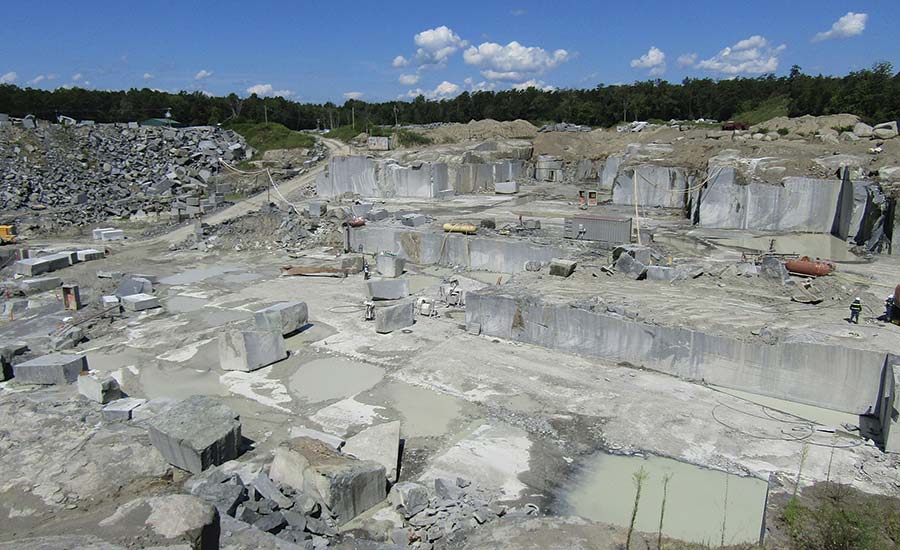Granite Quarries in South Africa Wonders: Exploring the Quarry Landscape
Granite Quarries in South Africa Wonders: Exploring the Quarry Landscape
Blog Article
Revealing the Mysteries of Granite Quarrying: Where Toughness and Beauty Meet
The world of granite quarrying is a world where the raw toughness of nature converges with human virtuosity to create frameworks that stand the test of time with an air of beauty. From the midsts of quarries to the thorough polishing in workshops, the process of changing granite into architectural wonders is a complex dance of custom and innovation. As we peer into the midsts of this old craft, we start to reveal the concealed ins and outs that shape the really significance of our constructed atmosphere.
The Beginnings of Granite Quarrying
In the record of architectural background, the origins of granite quarrying are shrouded in a tapestry of ancient craftsmanship and geological wonders. Going back to ancient Egypt and Mesopotamia, the extraction of granite from quarries marked the beginning of a journey that would eventually result in the production of several of the world's most renowned frameworks.
Granite quarrying's roots can be traced to the experienced artisans who identified the rock's durability and visual charm. Via a mix of primitive tools and sheer resolution, these very early quarry workers unearthed granite blocks that would certainly end up being the foundation of civilizations.
As human beings advanced, so did the methods of quarrying granite. The Romans, renowned for their design prowess, established sophisticated approaches for removing granite to create monoliths, holy places, and roads that stood the examination of time.
The legacy of these old quarrying practices remains to form modern design, with granite staying a sign of strength and style in building jobs around the world. (granite quarries in south africa)
Devices of the Quarrying Profession
The advancement of granite quarrying strategies from ancient civilizations to modern-day times highlights the essential function played by the tools of the quarrying trade in forming the market's methods. In ancient times, quarrying tools were basic, often including blades, hammers, and wedges made from materials like bronze or iron. These tools needed significant manpower and time to extract granite blocks from quarries.

Furthermore, the intro of pneumatically-driven tools and high-powered machinery has actually significantly reduced the physical labor required in quarrying procedures, improving worker security and performance. As the quarrying market remains to introduce, the devices of the trade remain at the center of driving progression and forming the future of granite removal.
Extracting Blocks of Granite
Utilizing precision equipment and progressed techniques, the extraction of granite obstructs from quarries has actually ended up being an advanced procedure in the modern quarrying market. The preliminary action entails identifying the place and dimension of the granite down payment to determine the most effective removal technique. As soon as an appropriate website is chosen, the removal process starts with the drilling of a fantastic read holes for the placement of dynamites. Regulated blowing up techniques are then used to disintegrate the granite into workable areas.

Polishing and Ending Up Methods
To accomplish a perfect surface on granite blocks, proficient craftsmens use a series of precise polishing and ending up methods. After the preliminary extraction and forming processes, the granite blocks undertake a thorough polishing phase to improve their all-natural appeal and longevity. One usual technique utilized in polishing granite is ruby abrasion, where industrial diamonds are used to grind and polish the stone to a smooth finish. This process not only creates a glossy surface area however likewise guarantees uniformity in shade and texture across the granite block.
Along with sprucing up, finishing methods are put on further fine-tune the granite's appearance. These methods may include flaming, developing, or brushing, each check offering special structures and coatings to suit various visual choices. Flaming, for circumstances, entails subjecting the granite surface area to heats to produce a harsh, distinctive coating, suitable for exterior applications where slip-resistance is important. Refining, on the other hand, gives a matte finish that is smooth to the touch, perfect for indoor kitchen counters and floor covering. my company By carefully choosing and applying these polishing and completing techniques, craftsmens can transform raw granite obstructs into exquisite pieces that showcase both strength and beauty.

Environmental Influence and Sustainability
With the expanding emphasis on ecological consciousness in the market, granite quarrying practices are significantly looked at for their effect on all-natural resources and long-term sustainability. Additionally, the transportation of granite from quarries to processing centers generates carbon emissions, better contributing to environmental degradation.
To reduce these effects and ensure sustainability in granite quarrying, sector stakeholders are taking on numerous steps. Applying sophisticated modern technologies to decrease energy usage and water use, redeeming quarried land for ecological remediation, and advertising liable sourcing practices are some techniques being used. Additionally, certifications such as the Forest Stewardship Council (FSC) and the Management in Power and Environmental Design (LEED) help consumers determine eco-friendly granite items.
Verdict
In verdict, granite quarrying is a procedure that requires specialized devices and techniques to remove blocks of granite and polish them to a high level of surface. While the ecological influence of quarrying can be considerable, efforts are being made to boost sustainability practices in the sector. Overall, granite quarrying is a delicate balance in between harnessing the toughness and beauty of this all-natural stone while lessening its effect on the setting.
Report this page